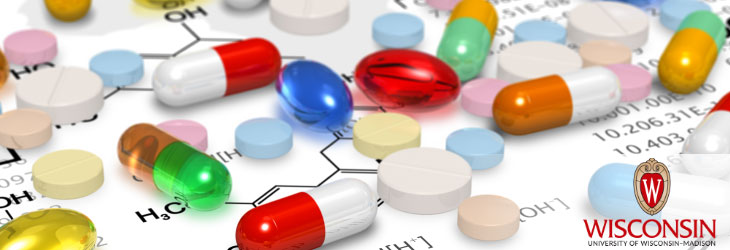Therapeutics & Vaccines

Tat-Utrophin as a Protein Therapy for Muscular Dystrophies
WARF: P06414US
Inventors: James Ervasti, Kevin Sonnemann
The Wisconsin Alumni Research Foundation (WARF) is seeking commercial partners interested in developing a fusion protein for the treatment of muscular dystrophies.
Overview
No effective therapy currently exists for the most common and severe form of muscular dystrophy disease, Duchenne Muscular Dystrophy (DMD). This disease, which is characterized by the weakening of voluntary muscles, is caused by the lack of a functional version of the muscle protein dystrophin.
Another muscle protein, utrophin, has a similar sequence and has been used to compensate for the loss of dystrophin in a mouse model. However, up-regulating utrophin or increasing the expression of functional dystrophin in muscle cells is difficult and will not be a feasible treatment option until clinically approved methods of gene therapy are developed.
Another muscle protein, utrophin, has a similar sequence and has been used to compensate for the loss of dystrophin in a mouse model. However, up-regulating utrophin or increasing the expression of functional dystrophin in muscle cells is difficult and will not be a feasible treatment option until clinically approved methods of gene therapy are developed.
The Invention
UW-Madison researchers have developed a fusion protein between utrophin and the TAT sequence from HIV, which is used to transport molecules into cells, for the treatment of muscular dystrophies, including DMD. This protein-based therapeutic provides the first effective treatment for these currently fatal conditions.
The TAT sequence provides a cell signal that leads to the internalization of utrophin in muscle cells. Once in the muscle cells, the utrophin is able to compensate for the lack of dystrophin, reducing or eliminating the disabling effects of dystrophinopathic conditions.
The inventors successfully treated a mouse model for DMD by injecting the fusion protein intraperitoneally. The TAT-utrophin localized to the target area of muscle, resulting in significant improvement in several key disease parameters.
The TAT sequence provides a cell signal that leads to the internalization of utrophin in muscle cells. Once in the muscle cells, the utrophin is able to compensate for the lack of dystrophin, reducing or eliminating the disabling effects of dystrophinopathic conditions.
The inventors successfully treated a mouse model for DMD by injecting the fusion protein intraperitoneally. The TAT-utrophin localized to the target area of muscle, resulting in significant improvement in several key disease parameters.
Applications
- Treatment of muscular dystrophies, including DMD
Key Benefits
- Because it is protein-based, this treatment circumvents the need for gene therapy.
- Relatively low cost and low risk
- Because utrophin is not toxic, the fusion protein can be administered in relatively high doses, making it easier to transduce therapeutically effective amounts into muscle cells
- Successfully used in mice
- Truncated versions of the fusion protein may be used to improve protein transduction in vivo.
Additional Information
Related Intellectual Property
Tech Fields
For current licensing status, please contact Andy DeTienne at [javascript protected email address] or 608-960-9857